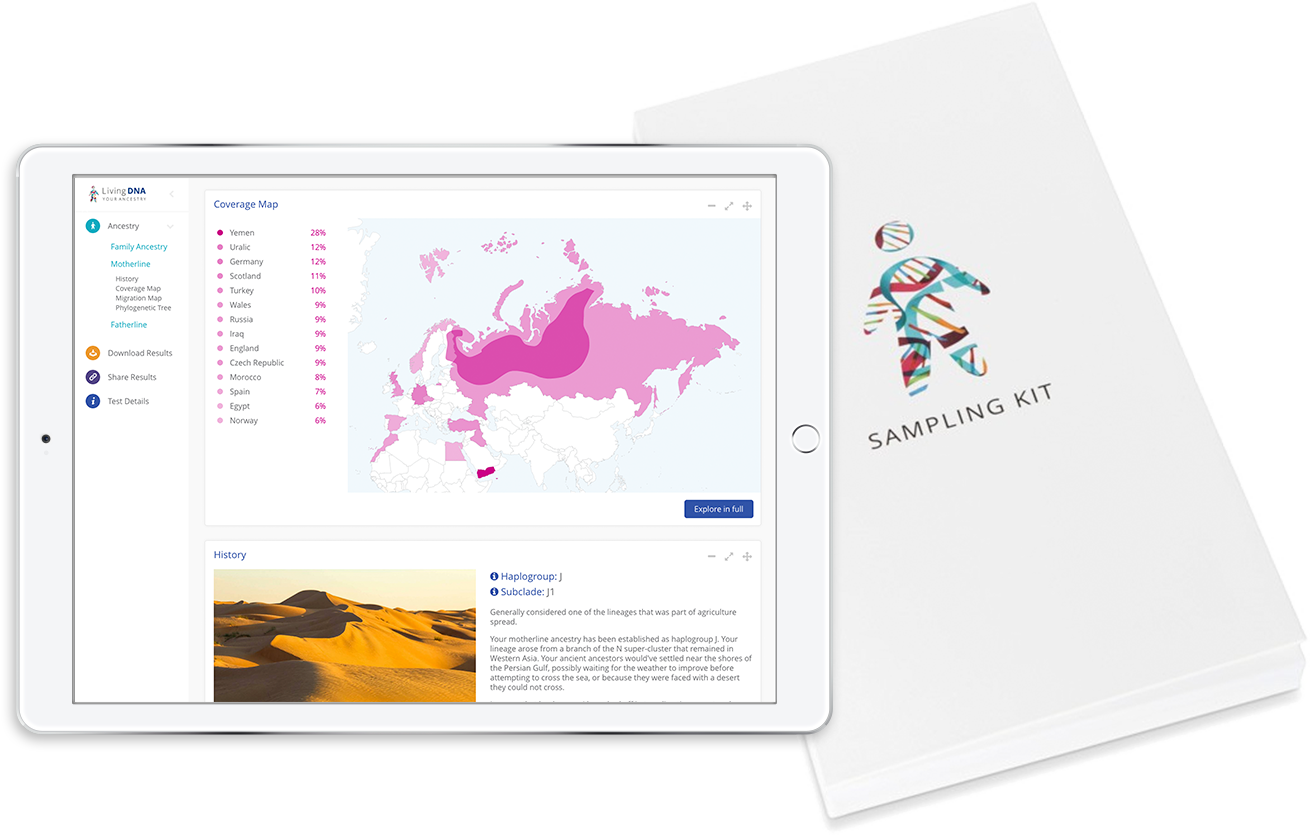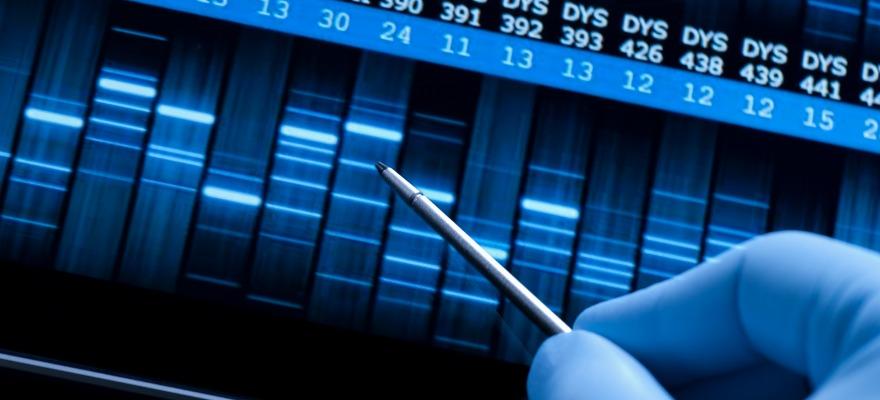DNA paternity testing reports provide powerful and often life-changing, information. This section explains how to read and understand a standard paternity test report from DNA Worldwide. If you have additional questions, please contact our experienced client support team on 01373 751 131.
A DNA paternity test result appears all in one page. It contains a DNA profile for each person in the test. The report also shows the combined parentage index (CPI) and a percentage indicating the strength of the result. All of this information produces a single answer for the question of paternity.
THE PATERNITY RESULTS STATEMENT
Following DNA paternity testing accreditation guidelines, results are reported with one of three possible statements. For example, if we tested John Doe, alleged father, and James Doe (child), our paternity report might say one of the following:
John Doe is excluded as the biological father of James Doe.
This means that John Doe cannot be the father of James Doe because the analysis shows that they do not share a paternity relationship.John Doe is not excluded as the biological father of James Doe.
This means that John Doe is considered to be the father of James Doe because the analysis shows that they share a paternity relationship.
Why does the report say "not excluded" if the person is the father? With DNA paternity testing it is possible to 100% exclude someone as the biological father. However, the only way to produce a 100% positive result, would be to test the entire genome of an individual - all of their DNA. DNA paternity tests use a standardised sample of DNA - up to 15 DNA markers - to predict the probability of paternity. These probabilities are usually very high - as high as 99.9999%. This means that, for an alleged father who is "not excluded", the paternity report is 99.9999% confident that he is the biological father.
DNA PROFILES
A DNA test profile is a set of DNA markers (up to 15) used to determine paternity and identity, including the FBI CODIS markers used for DNA evidence. Geneticists developed this set of markers for consistency in identifying individuals and named them according to their location on the gene (think of "D2S1338" as gene "2" location number "1338"). Each marker location (or "locus") shows two alleles, represented by numbers on the report. In this case the alleles are simply measures of short tandem repeats (STR) on the gene. One of these STR alleles comes from a person's father, one from their mother.
| Locus | Alleged Father | Child | Parentage Index |
| D2S1338 | 12, 13 | 10, 12 | 1.845 |
| D2S1358 | 8, 11 | 11, 14 | 2.714 |
| D8S1179 | 21.2, 32 | 19, 21.2 | 3.675 |
| D19S433 | 15, 18 | 12, 15 | 8.338 |
In a DNA paternity test, the analysis seeks matches of allele number values between the alleged father and child. Because the child must receive one STR allele from his father at all locations (or "loci"), there should be matches for each marker. (In some cases there are natural mutations, where the child has a slightly higher or lower value than the father, but these are somewhat rare. For this tutorial, we'll assume no natural mutations exist.)
An alleged father can be excluded as the biological father with as little as one mismatch between DNA profiles. When a person is excluded as the father, the profiles often reveal several, if not many, mismatches. In the following example, the 3 mismatches would exclude the alleged father (he could not be the biological father). Even though there are also 3 matches, these matches are random and do not indicate a paternity relationship. Almost any two people will have at least some matches, but a father-child relationship will show matches at all locations.
| Locus | Alleged Father | Child | Parentage Index |
| D2S1338 | 12, 13 | 8, 9 | 0.00 |
| D2S1358 | 8, 11 | 13, 14 | 0.00 |
| D8S1179 | 21.2, 32 | 19, 21.2 | 0.675 |
| D10S1008 | 7, 12 | 15, 18 | 0.00 |
| D14S1537 | 9, 14 | 11, 14 | 0.797 |
| D19S433 | 15, 18 | 12, 15 | 1.338 |
PATERNITY INDEX AND PROBABILITY
Each match receives a Paternity Index (PI) value. The paternity index is a way of measuring the strength of a particular match based in part on the relative uniqueness of the match. In our example, the child and alleged father each show an allele value of "12" at marker D2S1338, the paternity index value is 1.845. This is a reasonably strong match.
| Locus | Alleged Father | Child | Parentage Index |
| D2S1338 | 12, 13 | 10, 12 | 1.845 |
However, if DNA test analysts knew that most people would have an allele value of "12" at this location, the PI might be smaller, say .0782. It's true the two participants match, and that could be because one is the biological father of the child, but it could also be they match simply because most people would match with this allele value at this location.
| Locus | Alleged Father | Child | Parentage Index |
| D2S1338 | 12, 13 | 10, 12 | .0782 |
On the other hand, what if DNA scientists knew that very few people would have an allele value of "12" at this location? The match would be stronger because it's more rare. In this case the PI value might increase; it might be 3.452, or 12.819 or as high as 34.125, depending on the strength of the match. A PI value is 0.000 indicates that there is no match between the two profiles at this location.
Once the profiles have been analysed at all locations, the product of all paternity indexes create the Combined Parentage Index (CPI). For an alleged father to be considered the child's father (to be "not excluded" as the biological father) the CPI value must be at least 100. A CPI value of 100 corresponds to a probability of paternity of 99.0000%, a CPI value of 10,000 translates to a probability of 99.9900% and so on.
|
Locus |
Alleged Father |
Child |
Parentage Index |
|
D2S1338 |
12, 13 |
10, 12 |
1.845 |
|
D2S1358 |
8, 11 |
11, 14 |
2.714 |
|
D8S1179 |
21.2, 32 |
19, 21.2 |
3.675 |
|
D19S433 |
15, 18 |
12, 15 |
8.338 |
|
Combined Parentage Index (CPI): |
153.435 |
||
|
Probability of Paternity: |
99.348% |
||
According to DNA paternity testing accreditation guidelines, a paternity report must show a CPI of greater than 100 (and a probability of paternity greater than 99.0%). Most courts, child support agencies, or other legal entities require an accredited report (see Legal Paternity Testing for more information). Immigration cases require a CPI value of 200 (99.5%) or better.
CONCLUSION
While most DNA paternity tests reflect this "text book" example, there are many other factors to be considered. For example, natural mutations sometimes present more complicated results. Sometimes father and child share many common alleles and although there are many matches, the CPI value is not strong enough for a conclusive result. In most of these cases, including the biological mother significantly strengthens the test results. That's why DNA Worldwide strongly recommends including the mother on any DNA paternity test.
As always, if you have any questions regarding your DNA paternity test or any other DNA test from DNA Worldwide, please call us on01373 751 131.



.jpg)

.jpg)


